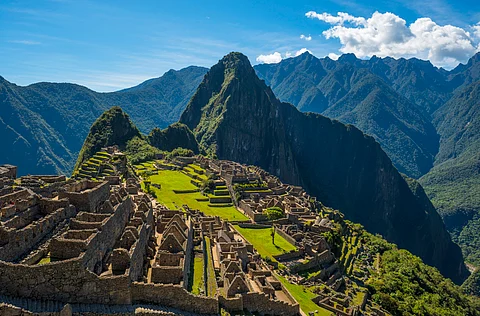

ISTOCK
High up in the misty Andes mountains of Peru lies a place that feels like it was plucked from a dream — stone walls, ancient temples, and mysterious terraces carved into the mountainside. It’s called Machu Picchu, and though it’s been there for over 500 years, the world only learned about it a little more than a century ago. How does a whole city vanish from the maps and then suddenly reappear?
Long before airplanes and Google Maps, before trains wound their way up the Andes, the Inca people built a city so high in the mountains that clouds often drift through its streets. The Incas were incredible builders — without modern machines or even iron tools, they shaped huge stone blocks so precisely that not even a blade of grass could fit between them. And they didn’t use cement. The stones were cut and placed in such a clever way that they’ve survived earthquakes, storms, and centuries of silence.
No one really knows why the Incas built Machu Picchu. It wasn’t their capital — that was Cusco. And it wasn’t just a regular village either. Some believe it was a royal retreat for the Inca emperor Pachacuti. Others think it was a sacred site used for astronomy and worship. What’s clear is that it was special — a place of importance, beauty, and power. And then, at some point in the 1500s, it was abandoned.
When Spanish explorers arrived in Peru and conquered the Inca Empire, they never found Machu Picchu. That may have been its saving grace. While other cities were looted or destroyed, Machu Picchu quietly disappeared under thick jungle vines. For nearly 400 years, it was forgotten by the outside world — hidden in plain sight, yet completely invisible.
That changed in 1911. A young American historian named Hiram Bingham was searching for lost Inca cities. Guided by locals and a young boy from a nearby farm, Bingham followed a steep trail up the mountainside. When he reached the top, what he saw took his breath away — stone walls, steps, and towers rising out of the forest. It wasn’t a legend anymore. Machu Picchu was real.
Even today, getting to Machu Picchu isn’t easy. There’s no airport nearby. Most visitors take a long train ride and then hike up steep paths surrounded by jungle and mist. But every step feels like a journey back in time. As you climb higher, the air gets thinner, the noise fades, and the mountains begin to whisper their secrets.
Walking through Machu Picchu feels like exploring a giant puzzle. There’s the Temple of the Sun, where light from the summer solstice falls perfectly through a window carved in stone. There are fountains and aqueducts that still carry water, showing just how advanced Inca engineering really was. There’s the Sacred Rock, shaped like the mountain behind it — maybe a place of worship, or maybe something else entirely. And then there’s the Intihuatana — a carved stone that may have worked like a solar calendar. Or maybe it was a spiritual compass. No one knows for sure.
What’s amazing is how much we still don’t know. Machu Picchu raises more questions than answers. Why was it built in such a remote place? How did the Incas carry those heavy stones up the mountains? Why was it left behind? Archaeologists have been studying the site for over a hundred years, and yet, many of its mysteries remain unsolved.
Alpacas roam the grassy terraces. Plants and moss grow between the stones. And every year, visitors from all over the world come to walk its paths, take in the view, and wonder what life might have been like when the city was still alive.
Despite having to move stones that weigh over 50 tonnes, the Incas never used wheels or animals to drag them. The stones were hauled up steep mountains by sheer human effort — and still fit perfectly today.
The stones of Machu Picchu were cut and arranged to move slightly during earthquakes — and then fall right back into place. This clever design has helped the city survive centuries of seismic activity.
There are reports of underground passageways and sealed doors within the site. One particularly mysterious door, called the “Gate of the Sun God,” was discovered with ground-penetrating radar — but remains unopened.
Local farmers always knew something was up there, but the wider world had no idea. It took a young boy guiding an explorer named Hiram Bingham to bring it to global attention — nearly 400 years after it was abandoned.
Many parts of Machu Picchu were designed to line up with the sun and stars. During the solstices, the sun shines perfectly through specific windows or lands exactly on sacred stones.
“Machu Picchu” means “Old Peak” in Quechua, the local language. But no one knows what the Incas themselves called the city. Its true name has been lost to history.
ISTOCK
One of the temple’s carved stones resembles the head of a condor, while the rocks behind it look like its outstretched wings. To the Incas, the condor was a symbol of the heavens.
ISTOCK
The terraces weren’t just for farming — they were part of a complex water management system. Rainwater drains through underground channels, keeping the city from flooding even now.
ISTOCK
The Incas didn’t have metal tools like chisels or hammers made of iron or steel. They used harder stones to shape softer ones — a method so precise that their walls still stand without mortar.